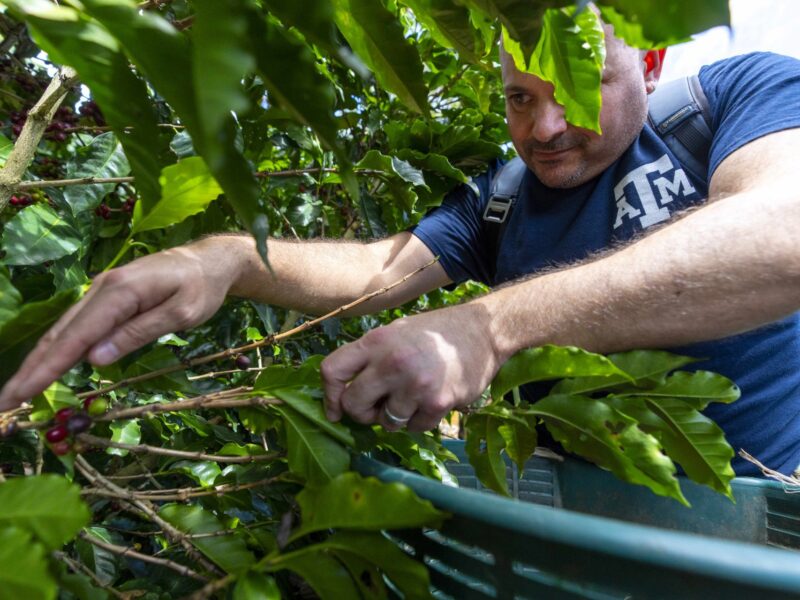Texas A&M AgriLife Study Targets Contamination Hotspots In Food Processing

Food safety through a greater understanding of the contamination “hotspots” in our food supply chain, particularly meat, is a priority for a new Texas A&M AgriLife Research study.
Sapna Chitlapilly Dass, a meat science research assistant professor in the Texas A&M University College of Agricultural and Life Sciences’ Department of Animal Science, said her study aims to identify the hotspots of contamination in the food processing industry.
Her goal is to determine how and where pathogens like E. coli and Salmonella survive in processing facilities, and how to prevent and treat them.
Dass’s study, “An Omics and Microscopic Assessment Pertaining to the Collective Dynamics of Environmental Multispecies Biofilms that Facilitate Sanitizer Tolerance and Foodborne Pathogen Dispersal,” is supported by a $479,000 U.S. Department of Agriculture National Institute of Food and Agriculture grant.
Texas A&M leads food safety charge
“As one of the leading institutions conducting research in the area of food safety, we are excited about what information this research will provide to enhancing the safety of our food chain,” said Cliff Lamb, head of the Department of Animal Science. “The research focuses on understanding how foodborne pathogens are protected and released into the food processing environment.”
Lamb said the information gained in this study is expected to lead to new strategies for preventing and controlling accidental contamination of food with pathogens to keep our food supply chain safe.
“Reducing contamination of our meat supply by pathogens such as E. coli O157:H7 and Salmonella will reduce recalls that trigger significant financial losses, but more importantly will reduce the incidence of human illness and death associated with contaminated food,” he said.
The development of new strategies for controlling accidental contamination of food with these pathogens will have significant impacts on human health and reduce economic losses, Lamb said.
Where the contamination hotspots hide
Dass is tracking down the hiding locations of these hotspots and aims to eliminate them before they can disperse and infect the food products.
She explained that foodborne pathogens such as E. coli, Salmonella and Listeria form highly resilient multi-species biofilms in food processing facilities. Biofilms are a consortium of different types of microorganisms living in an envelope of thick film or slime. Dass said examples of biofilms include the slimy feeling on a kitchen sponge, or a slick shower floor.
In the processing industry, she said, they hide in areas such as the back of conveyor belts or drains, which have poor accessibility for sanitation and therefore results in biofilms with greater sanitizer tolerance and antimicrobial resistance.
“We want to control food contamination by investigating the biofilm hotspots,” Dass said.
Dass said she will address these objectives experimentally using a combination of microscopic, microfluidic techniques or creating a lab-on-chip, and omics, which includes genomics and transcriptomics supported by large scale mathematical modeling.
This research is a collaboration, and testing will occur at Texas A&M, Stanford University and at the USDA-Agricultural Research Service U.S. Meat Animal Research Center’s pilot meat processing facility in Clay Center, Nebraska.
Conquering contamination one step at a time
She said one segment of the study will compare and characterize diversity, stability and resilience of the food pathogens and meat processing drain mixed-species biofilm in response to commonly used meat processing sanitizers. Another segment of the study will examine whether spatial organization and location of the food-pathogen within the multispecies biofilm impacts sanitizer tolerance.
The final two steps will be evaluating the detachment and transmission dynamics of food pathogens from biofilm to the food processing facility using lab-on-chip, and designing low-cost sustainable materials for drainage systems with microscale surface patterns that can prevent dispersal of pathogens to food.
“A comprehensive understanding of foodborne pathogen dispersal processes from hotspots in food processing facilities and their underlying microbiological mechanisms is highly significant, as it will lead to powerful new approaches that will reduce the contamination of food with pathogens,” Dass said.
This article by Kay Ledbetter originally appeared on AgriLife Today.





